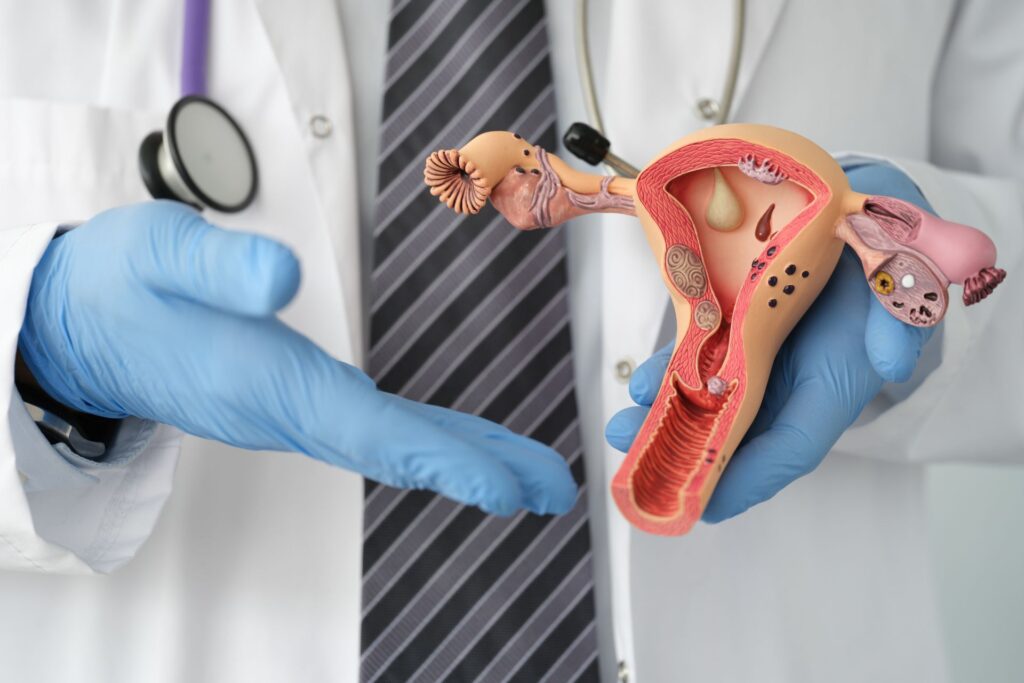Understanding Fibroids: The Common Condition No One Talks About—But Should
Despite affecting millions of women globally, uterine fibroids remain a health topic clouded in silence, stigma, and misinformation. For many, fibroids are discovered during a routine check-up — or worse,

Despite affecting millions of women globally, uterine fibroids remain a health topic clouded in silence, stigma, and misinformation. For many, fibroids are discovered during a routine check-up — or worse, after years of unexplained pain, heavy bleeding, or fertility issues.
What makes fibroids particularly troubling is not just their prevalence, but how often they are underdiagnosed, misunderstood, and minimized, especially among women of color.
In this article, we break down what fibroids are, who’s most at risk, and what treatment and management options are available today.
What Are Fibroids?
Fibroids — also referred to as uterine fibroids, technically called uterine leiomyomas or myomas — are noncancerous tumors that grow in or around the uterus. They are made of muscle and fibrous tissue and can vary widely in size, number, and location.
They may be:
- Intramural – within the uterine wall
- Subserosal – projecting outside the uterus
- Submucosal – growing into the uterine cavity
- Pedunculated – attached by a stalk inside or outside the uterus
Most fibroids are benign (noncancerous), but they can significantly impact quality of life depending on their size, location, and symptoms.

How Common Are Uterine Fibroids in Women?
Fibroids are incredibly common, especially among women of reproductive age:
- According to the Office on Women’s Health (U.S. Department of Health & Human Services), up to 80% of women will develop fibroids by age 50.
- Black women are 2 to 3 times more likely to develop fibroids than white women — and they tend to develop them earlier, with more severe symptoms.
- Fibroids are the leading cause of hysterectomy in the U.S., accounting for about one-third of all procedures.
Despite their prevalence, many people with fibroids don’t know they have them — an estimated 50% of cases are asymptomatic.
What are the Early Signs and Symptoms of Fibroids?
While many fibroids are small and symptomless, others can cause significant physical and emotional distress. Common symptoms include:
- Heavy or prolonged menstrual bleeding
- Pelvic pain or pressure
- Frequent urination or difficulty emptying the bladder
- Constipation
- Pain during intercourse
- Lower back or leg pain
- Enlarged abdomen or bloating
- Fertility issues or pregnancy complications
Because these symptoms overlap with other gynecological conditions like endometriosis or ovarian cysts, misdiagnosis is common — especially in underserved populations.
Who’s Most at Risk?
While fibroids can affect anyone with a uterus, certain groups face higher risk:
- Fibroids in Black women: More likely to be diagnosed and more likely to experience severe symptoms at a younger age
- Women aged 30–50: Fibroids are most common during the reproductive years
- Family history: A woman is more likely to develop fibroids if her mother or sisters had them
- Obesity: Higher body fat levels can increase estrogen levels, a hormone that fuels fibroid growth
- Diet: Diets high in red meat and low in green vegetables and fruits may increase risk
- Vitamin D deficiency: Studies show a link between low vitamin D and fibroid risk
Diagnosis
Fibroids are typically detected through:
- Pelvic exam
- Ultrasound (transabdominal or transvaginal)
- MRI (to map fibroids prior to treatment)
- Sonohysterography (saline-infused ultrasound)
- Hysteroscopy (camera inserted into the uterus)
Because symptoms can be vague or dismissed as “normal,” especially by women themselves, many fibroids go undiagnosed for years.
What are the Fibroid Treatment Options?
Treatment for fibroids depends on severity of symptoms, size and location of the fibroids, age, and desire to have children.
Non-Surgical Options:
- Watchful waiting – if fibroids aren’t causing major symptoms
- Hormonal medications – such as birth control pills, IUDs, or GnRH agonists to shrink fibroids
- Non-hormonal options – like tranexamic acid for heavy bleeding
Minimally Invasive Procedures:
- Uterine fibroid embolization (UFE) – blocks blood supply to fibroids, causing them to shrink
- MRI-guided focused ultrasound (FUS) – uses sound waves to destroy fibroids without incisions
- Myomectomy – surgical removal of fibroids, preserving the uterus
Surgical Option:
- Hysterectomy – complete removal of the uterus, often considered when other treatments fail
It’s important to discuss fertility goals with a provider before undergoing any treatment, especially surgical procedures.
Health Equity and Fibroids
The fibroid crisis is not just medical — it’s deeply racial and systemic.
- Black women are more likely to be offered hysterectomy as a first-line treatment, even when less invasive options exist.
- Delayed diagnosis is more common in Black, Hispanic, and low-income patients due to lack of access to specialists or imaging.
- Research funding for fibroids has historically been underprioritized despite its high prevalence.
The need for inclusive research, provider education, and patient advocacy is urgent.
How to Advocate For Yourself With Fibroid Symptoms
If you suspect fibroids or are experiencing symptoms, consider:
- Tracking your menstrual cycle and symptoms
- Requesting pelvic imaging
- Asking about all available treatment options — not just hysterectomy
- Seeking second opinions, especially if you’re told “it’s normal” without testing
- Maintaining a balanced diet, regular exercise, and getting adequate vitamin D
- Joining support groups or online communities to share information and experiences
The wrap up
Fibroids are common — but being in pain every month, missing work, or struggling with fertility should never be considered “normal.” Understanding fibroids means empowering women and people with uteruses to advocate for their health, challenge medical bias, and demand better research and treatment.
The silence around fibroids is finally starting to break. And the more we understand, the better we can fight for care that heals — not just manages.








